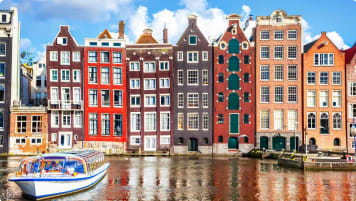The History of Dutch Tulip bulbs
The Origins of Tulips While it’s often assumed that tulips have their origins in The Netherlands, they actually originated in Turkey and Central Asia. In the sixteenth century, traders brought Tulip bulbs to Holland from…
1 Nov 17 · 10 mins read
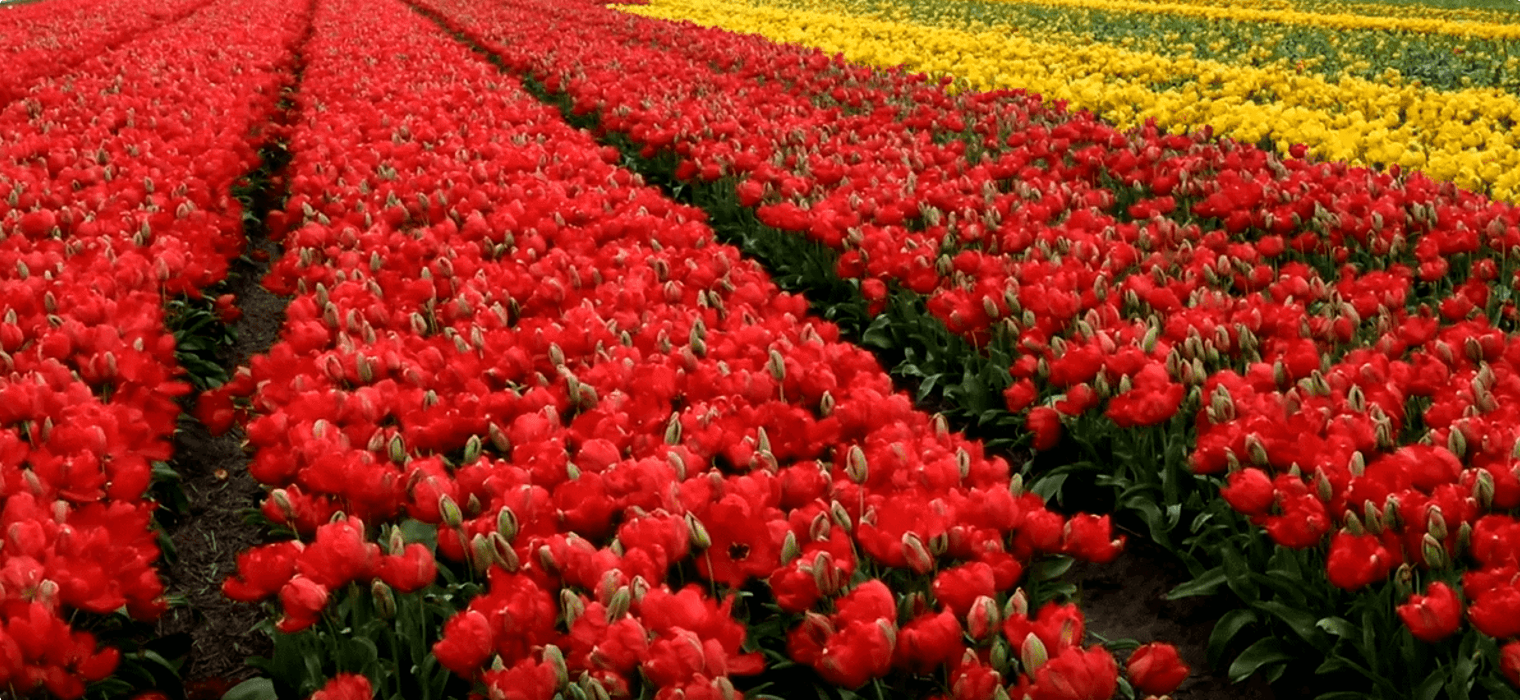
The Origins of Tulips

While it’s often assumed that tulips have their origins in The Netherlands, they actually originated in Turkey and Central Asia. In the sixteenth century, traders brought Tulip bulbs to Holland from Turkey, where they quickly grew in popularity. By the start of the seventeenth century, the Dutch public’s enthusiasm for the flowers had blossomed into full ‘tulipmania’. However, the very beginnings of the tulip can be traced back to Persia in the tenth century, where scholars believe they were developed by hybridising numerous wildflowers. Some historians suggest that the name ‘tulip’ derives from the Persian term for ‘turban’, due to its similar shape.
The Tulip in the Netherlands

It is widely accepted that Carolus Clusius, one of the sixteenth century’s most-influential horticulturalists, popularised the tulip bulb in The Netherlands. Clusius planted the first tulip bulbs in one of Europe’s oldest botanical gardens, Hortus Botanicus, which are still open to visitors today. In fact, we explore these beautiful gardens during our Dutch Tulip Tour. Clusius founded the garden in 1590. After planting the tulip bulbs, he attempted to protect them, and refused both to sell the plants or share his knowledge of them. Nevertheless, some of the bulbs were stolen, and thus the Dutch tulip trade began.
Over the ensuing centuries, the Dutch tulip trade flourished. Today, from roughly mid-April to mid-May, fields all over Holland turn into amazing, colourful oceans of flowers.
One of the best places in the world to see tulips in bloom is the Keukenhof Flower Garden. Set amongst lovely woodlands and water gardens, here you can see the spectacular colours of the seven-million tulips planted each year. The Gardens are almost home to the world’s largest lily show, which is housed in one of the pavilions. Another section houses hundreds of orchids, displayed in ornate and artistic exhibitions.
Today, Holland produces around 3-billion tulip bulbs a year, mostly for export.
The Keukenhof Flower Garden
Another highlight of our Tulips of Holland small group tour is a visit to the Keukenhof Garden. Covering an area of 32 hectares, Keukenhof, also known as the Garden of Europe, is the world’s second largest flower garden following the Dubai Miracle Garden. It is situated in the small town of Lisse in South Holland.
Keukenhof has a rich history. For centuries, the area was part of the estate of Teylingen Castle. During the 15th century, game was hunted and food collected in the region’s untamed woods and dunes for the kitchens of the castle of the Countess of Holland, Jacoba van Beieren. This is where ‘Keukenhof’ (which means ‘kitchen courtyard’ in Dutch) gets its name. Rich merchants took over the grounds after the Countess’s death. East India Company captain and governor Adriaen Maertensz Block lived there in his retirement years in the 17th century. Block resided in the country house (now known as Castle Keukenhof) that he had built in 1641.
By the 17th and 18th centuries, Lisse was home to many estates of rich merchants and nobility, with impoverished peasant farmers living outside the estates. The forests and gardens of the Keukenhof and other estates added to the town’s beauty and glory. Yet in the following centuries, every one of these estates – except Keukenhof – was removed to make way for the cultivation of tulip bulb flowers. The sandy soils were highly suitable for growth of tulip bulbs, provided the soil was fertilized. The nearby dunes were excavated and forests cut down progressively over time for more fields for the flower business. This clearing process brought employment and prosperity to the impoverished farmers.
Updating Keukenhof
In the 19th century, the Baron and Baroness Van Pallandt assigned the landscape architect Jan David Zocher and his son Louis Paul (who had also worked on Amsterdam’s Vondelpark) to design the grounds around the castle. That garden, in the English landscape style, still forms the basis of Keukenhof today. Landscape designers and architects such as Lancelot ‘Capability’ Brown, Charles Bridgeman and especially William Kent developed this garden style in England. Well-defined pathways were designed to provide a variety of scenic effects and capture the beauties of the landscape. The views were designed to merge into each other.
In the 20th century, the bulb flower business continued to boom, resulting in the establishment of auction and trading houses, large-scale cultivators, and cooperatives. Today, Lisse exports tulip flowers in large quantities to over a hundred countries.
The Mayor of Lisse established the Garden Show in 1949. The idea was to present a flower exhibit where growers from all over the Netherlands and Europe could show off their hybrids and help the Dutch export industry. This exhibition soon developed into an annual event. Every spring, Keukenhof attracts hundreds of thousands of visitors from across the world. Seven-million bulbs (4.5 million of which are tulip bulbs) are planted each autumn, then dug up at the end of the flowering season.
Keukenhof Today
Keukenhof is the international and independent showcase of the Dutch floricultural industry where exhibitors display their floral wonders. One-hundred suppliers and five-hundred flower growers place their best products at its disposal. Gardens and four pavilions show a fantastic collection of tulips, hyacinths, daffodils, and orchids. They also display roses, carnations, irises, lilies, and many other flowers. During the year, 50 employees work in the garden. This number swells to a huge 750 during the months in which the garden is open.
The garden also includes three pavilions that house stunning displays of orchids and lilies, akin to the Chelsea Flower Show pavilion displays.
The historical garden is an enclosed garden where many old types of tulip bulbs can be seen. The nature garden consists of a water garden where shrubs and perennials are combined with bulbous plants. The Japanese country garden is a non-traditional garden in a natural environment.
The Tulip bulb

The tulip bulb is a perennial bulbous plant in the genus Tulipa, of which there are around 75 wild species. The genus belongs to the Liliaceae family. The native range of the genus extends west to the Iberian Peninsula, through North Africa to Greece, the Balkans, Turkey. It also extends throughout Iran, Syria, Jordan, Lebanon, Israel, north to Ukraine, southern Siberia and Mongolia and east to the NW China. The tulip’s centre of diversity is in the Hindu Kush and Tien Shan mountain region of Asia. It is typically found amongst steppe and winter-rain Mediterranean vegetation.
The garden tulip bulbs for which the Dutch are famous have been developed substantially since they were first commercialised in the 16th century. The skill of hybridists has consistently improved the quality, replacing older varieties with larger, sturdier, healthier bulbs with a wider variety of colours. Two centuries ago, hyacinth flowers were either blue or white. Moreover, they were spaced so openly upon their spikes that they more closely resembled bluebells than the fat beauties of today.
Today’s Dutch Bulbs
Other bulbs grown today include the following:
- Firstly the good old onion! Few people know that the Netherlands is the world’s biggest producer of onions!
- Begonia, daffodil, allium, crocus, dahlia, daffodil, gladioli, hyacinth, cyclamen, ranunculus, iris
- Colocasia genus: common names include Elephant-ear and Taro
- Amaryllis genus: belladonna lily, Jersey lily and naked lily
- Muscari genus: produce spikes of dense, usually blue, urn-shaped flowers resembling bunches of grapes, hence the common name for the genus is grape hyacinth
- Calla: although not considered true lilies, the calla lily is a white, trumpet-shaped plant
- Leucojum genus: snowbells and dewdrops
- Ornithogalum genus: the common name of the genus, Star-of-Bethlehem, is based on its white star-shaped flowers, after the Star of Bethlehem that appeared in the biblical account of the birth of Jesus
- Lycoris genus: mostly known as spider lilies: with a variety of colours that can be white, yellow, orange, or red
- Paperwhites: is part of the Narcissus genus, which includes daffodils
The Black Tulip
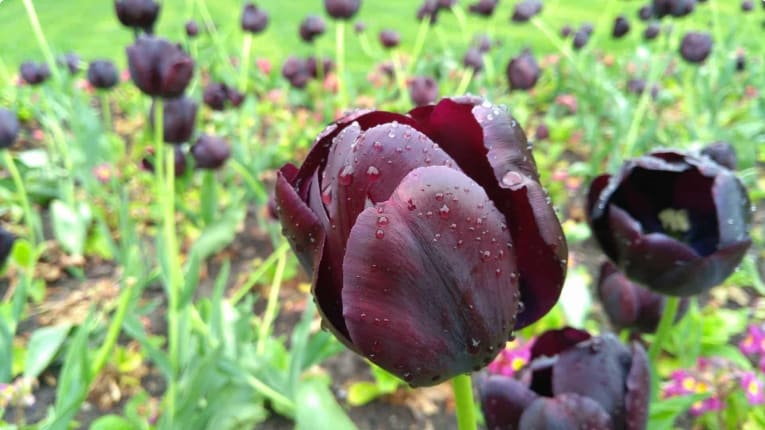
People tell many romantic tales about the tulip flower, but one of the most enduring concerns the black tulip. It was made particularly famous as the subject of the novel by Alexander Dumas, titled The Black Tulip. It was long thought that the elusive bulb would remain the stuff of horticulturists’ dreams. However, in 1986, Geert Hageman, a grower from the North of Holland, managed to create the Paul Scherer tulip, a black tulip. He achieved this by cross-fertilizing thousands of purple and dark tulip bulbs. A few days later, The New York Times published an article celebrating the achievement. Eleven years later, the bulb was in production.
Tulip Mania

In the 1630s, the price of Tulips in Holland rose rapidly, and their value became so inflated that the government attempted to put a stop to the market. This is sometimes referred to as the first economic bubble. The craze lasted about three years, before the market collapsed and took some time to recover.
Between 1634 and 1637, the enthusiasm for the new flowers triggered a speculative frenzy now known as ‘tulipmania’. Tulip bulbs became so expensive that they were treated as a form of currency, or rather, as futures. In 1646, a tulip such as the red and white ‘Admirael van der Eijck’, or the purple-splashed ‘Generalen van Gouda’ would sell for more than 1,000 Dutch florins, at a time when the average annual income of a skilled worker was about 300 florins. At the peak of this period, a single tulip bulb could be sold for a price that could have purchased a house in the best parts of Amsterdam: the equivalent of 15-years’ wages for the average bricklayer.
Around this time, a vessel known as the ceramic tulipiere was devised for the display of cut flowers stem by stem. Vases and bouquets, usually including tulips, often appeared in Dutch still-life paintings. To this day, tulips are associated with the Netherlands, and cultivated forms of the tulip are often called ‘Dutch tulips’. The world’s largest permanent display of tulips is at the Keukenhof Garden.
Speculation on Tulips
Speculation on tulip bulbs built quickly as the middle- and upper classes sought them as the ultimate symbol of wealth and prosperity. Along with avaries of exotic birds and large, decorative fountains, there would always be tulips in the garden of any self-respecting Emperor, King, Prince, Archbishop or member of the aristocracy. Frequently, mirrors were set up in the garden to give the illusion that the owner had been able to afford to plant many more tulips than he actually had.
Until 1630, the bulbs were grown and traded only between connoisseurs and scholars. However, more commercially minded people soon noticed the ever-increasing prices being paid for certain tulips and thought they’d found the perfect get-rich-quick scheme. More and more people became caught up in the trade. Groups of speculators met regularly in local inns to buy and sell bulbs. (Innkeepers of the time really flourished!) It wasn’t long before the majority of the Dutch community became obsessed. Those who could not afford the bulbs settled instead for art, furniture, embroideries, and ceramics that featured the flowers.
Since tulip bulbs were sold by weight, most people were speculating on the future weight of the bulb once it was dug. All investors had to do was plant some bulbs and sit back on the reasonable assumption that the bulbs would grow while in the ground. Since it was like making money out of thin air, speculating also became known as ‘the wind trade’. Pastors and moralists warned their followers against such an obsession with worldly goods. Meanwhile, the government also tried passing laws to stop the wild speculation.
The inevitable ‘crash’ of tulip prices happened in 1637, when a group of sellers could not get the prices they wanted and people everywhere suddenly came to their senses. Everyone saw that the current prices were ‘artificial’ and their value as elusive as the wind! Many lost everything they owned. However, for others, Tulip Mania had done little to lessen the flower’s beauty and grace. Indeed, some of the rare varieties could still command huge prices.
Dutch Tulip bulbs: Facts
Tulips are an enormous part of both the Dutch landscape and economy:
- Horticultural exports amounts to over €16 billion. Horticulture accounts for 39% of Dutch agricultural production.
- The Netherlands has an exceptionally large share of the world trade in horticultural products, at 24%. In trade in floricultural products worldwide, the Netherlands is dominant with a share of 50%. In bulbs, the share is an even greater 80%.
- The Dutch produce 4.32 billion tulip bulbs each year: 53% of which are grown into cut flowers. Of these flowers, 1.3 billion are sold in the Netherlands as cut flowers and the remainder is exported: 630 million bulbs in Europe and 370 million outside of Europe.
- The Dutch are the world’s largest exporter of seeds: the exports exceeding €1.5 billion and growing at a rate of 5% each year.
- Of the approximately 1,800 new plant varieties that enter the European market each year, 65% originate in the Netherlands.
Tulips Today
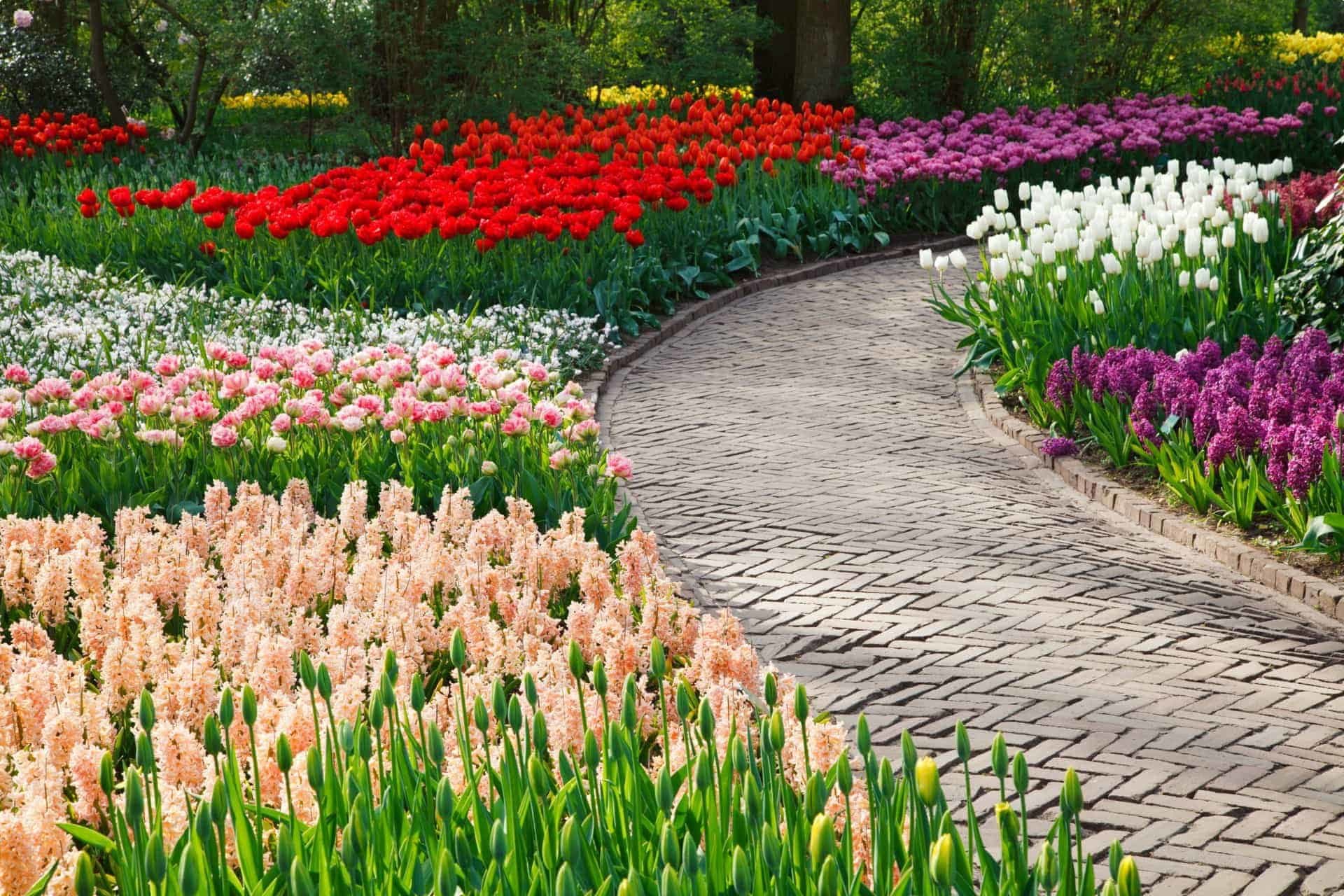
Gardeners have developed the garden tulip bulbs for which the Dutch are famous substantially, since they were first commercialised in the 16th century. The skill of hybridists has consistently improved the quality. Skillful horticulturalists have replaced older varieties with larger, sturdier, healthier bulbs with flowers in a much wider variety of colours.
For more information about the fascinating story of the tulip, check out the website of the Amsterdam Tulip Museum. This website is an excellent resource on all things relating to these gorgeous and quintessentially Dutch flowers.
Experiencing Dutch Tulips with Odyssey
Odyssey’s Dutch Tulip Small Group Tour takes travellers on an unforgettable tour of the Netherlands. Over the course of seven days, travellers are given a taste of the country’s many delights. The main focus, however, is the Keukenhof flower garden.
The Keukenhof garden has some 7 million tulip bulbs planted each year to present a truly spectacular festival of colour every year at tulip time. This blend of tulips, daffodils, and hyacinths fills over 32 hectares of flower gardens with colour and fragrance on an almost unimaginable scale.
The Dutch Tulip tour also views the main sights of old Amsterdam, a World Heritage Site, first on a walking tour. Our walking tour with local guides is followed by a cruise along its 17th-century canals. To join us for a memorable experience with Dutch Tulips, please click here.
About Odyssey Traveller

We specialise in educational small group tours for seniors, typically groups between six to 12 people from Australia, New Zealand, USA, Canada and Britain. Our maximum number of people on a tour is 18 mature aged travellers. Typically, our clients begin travelling with us from their mid 50’s onward. But be prepared to meet fellow travellers in their 80s and beyond! Both couples and solo travellers are very welcome on our tours. We have some 150 tours and offer 300 scheduled departures on offer each year. Odyssey has been offering this style of adventure and educational programs since 1983.
Odyssey Traveller is committed to charitable activities that support the environment and cultural development of Australian and New Zealand communities.
Odyssey Traveller scholarship for Australia & New Zealand University students.
We are also pleased to announce that since 2012, Odyssey has been awarding $10,000 Equity & Merit Cash Scholarships each year. We award scholarships on the basis of academic performance and demonstrated financial need. We award at least one scholarship per year. We’re supported through our educational travel programs, and your participation helps Odyssey achieve its goals. Students can apply for the scholarship by clicking on this link to find out more details.
Join our loyalty program when you join an international small group tour.
Every International small group tour taken typically contributes to your membership level in our Loyalty Program for regular travellers. Membership of the alumni starts when you choose to take your first international small group tour with Odyssey Traveller, discounts in tour pricing for direct bookings accrue from your third tour with Odyssey Traveller. To see the discounts and benefits of being a Bronze, Silver, Gold, and Diamond alumni member with us, please see this page.
For more information on Odyssey Traveller and our educational small group tours, visit and explore our website, and remember to visit these pages in particular:
- Terms and conditions applicable for booking an Odyssey Traveller tour.
- FAQ’s about Odyssey Traveller
Alternatively, please call or send an email.
Related Tours

7 days
AprDutch Tulips | Netherlands Small Group Tours
Visiting The Netherlands
Our small group guided tour in the Netherlands provides us with a delicious taste of its delights. We view the main sights of old Amsterdam, a World Heritage Site, first on foot and then from the comfort of a cruise along its 17th century canals. Our exploration of Dutch gardens includes the Hortus Botanicus, an impressive university garden. Timed to enjoy what is perhaps the highlight of the program - a visit to Keukenhof’s bulb gardens. They contain more than 7 million tulips, daffodils and hyacinths which fill over 32 hectares.
From A$6,525 AUD
View Tour
26 days
AprWestern Europe Chateaux and Gardens | Small Group Tour for Seniors
Visiting Belgium, France
This small group escorted educational tour combines visits to France, Belgium, Luxemborg, the Netherlands, and Germany. During the 26 days, we will discover a selection of the finest gardens and chateaux in Europe. Our destinations also include several UNESCO World Heritage Sites, for example the royal palaces built by the Prince-Bishop of Cologne in Brühl, Germany.
From A$15,745 AUD
View Tour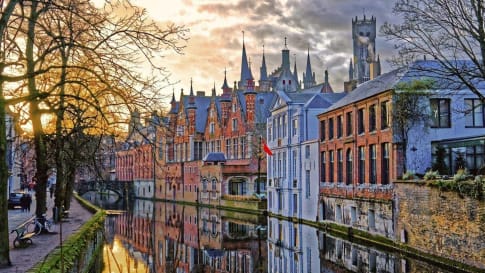
21 days
SepBelgium, Netherlands, France, Germany Art Tour | Western Europe Art Tour
Visiting Belgium, France
Most of us have already experienced the grandeur of classic galleries such as the Louvre and the National Gallery. Travel with like-minded people in a small group tour and be surprised by the lesser-known but equally wonderful smaller art galleries across Northwest Europe.
From A$15,895 AUD
View Tour


